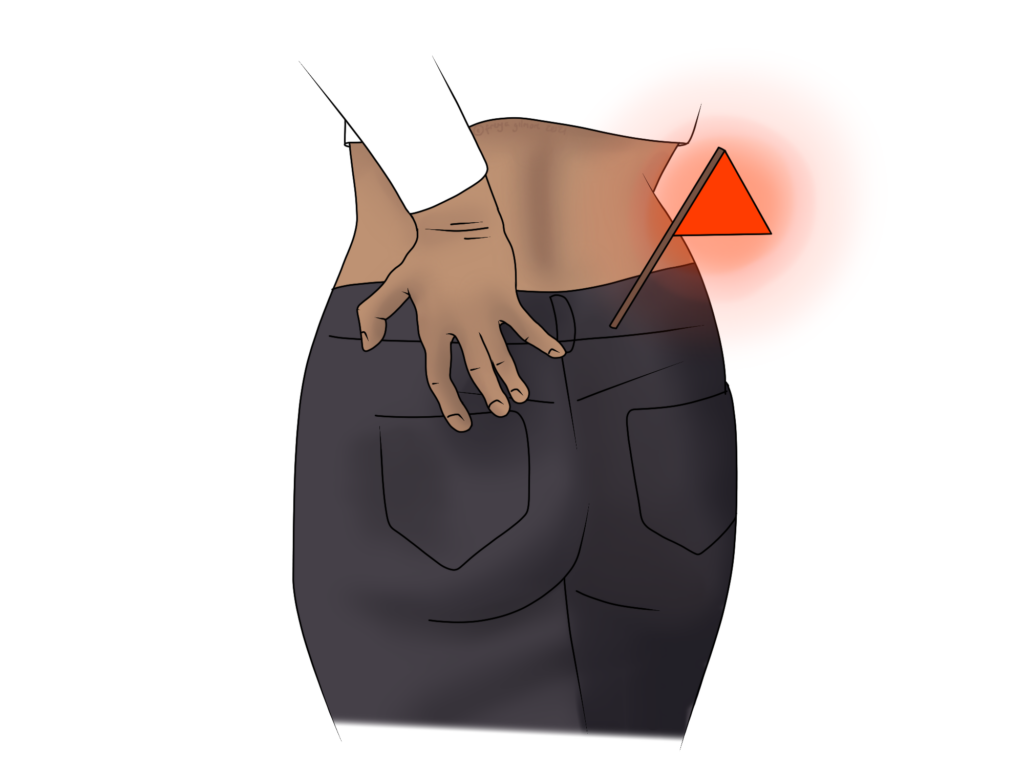Most cases of lower back pain, although disruptive, are considered simple. Osteopaths see a lot of lower back pain, so we know what “simple” looks like, and are well placed to identify complex cases.
What Constitutes a Red Flag in Lower Back Pain?
Most lower back pain is caused by something mechanical. That might include:
Red flags would point to things like:
- fractures (including osteoporotic fractures)
- malignancies and tumours
- rheumatological causes
- infections
- cauda equina syndrome
Broadly speaking, these more serious issues share a handful of symptoms. Pain that does not respond to heat, ice, or movement might set off some alarm bells. Night pain and pain that lasts for more than 30 minutes after waking are also worth investigating further. Beverley will take a detailed case history to pick up any flags that might come with your pain.
Simple Back Pain
In contrast to the above, simple cases would be characterised by:
- responsiveness to stretches and heat or ice
- improvement with conservative treatment (like osteopathy)
- enough relief with rest to get proper sleep at night
If these symptoms resonate with you, your osteopath would be a good place to start. You don’t need a referral, or a diagnosis beforehand. Osteopaths are primary healthcare practitioners, meaning we can start from scratch and provide treatment in the first session.
Managing Complex Cases
When the red flags start waving, we prepare to refer you on to someone more appropriate. Unless it looks like an emergency, we will endeavour to complete the case history. This allows us to gather enough information to make a confident referral, suggesting what we think might be wrong where appropriate. Sometimes referring back to your GP is the best port of call, but if it’s possible to send you straight to the right specialist, that would be even better.
Sometimes it’s worth referring even if your symptoms are largely under control. For example, some rheumatological conditions can only be diagnosed by a rheumatologist, which opens the door to specific medications. Some of these medications are strong, but can make a big difference to the long term progression of your condition. They’re unavailable without the diagnosis, and they need to be started before symptoms get too bad.
Emergencies include signs of fracture and cauda equina syndrome. “Cauda equina” means “horses tail” and it refers to the far end of the spinal cord, where the cord splits into a number of nerves that continue to run through the spinal canal. This looks a bit like a horses tail. If these nerves are compressed, as possible with a bulging disc, it’s a medical emergency. Signs include numbness in the “saddle area”, retention of urine, and sciatica in both legs. For best results, decompression surgery should be perfomed within 8 hours of onset. So in a case like this, don’t expect us to finish the session!
Knowledge is Power
As mentioned above, the vast majority of cases are simple. But knowing what to look for is key for making the right decisions for your health. If in doubt, get in contact with your doctor or osteopath before an appointment.
Click here to make an appointment for your back pain in Umm Suqueim

